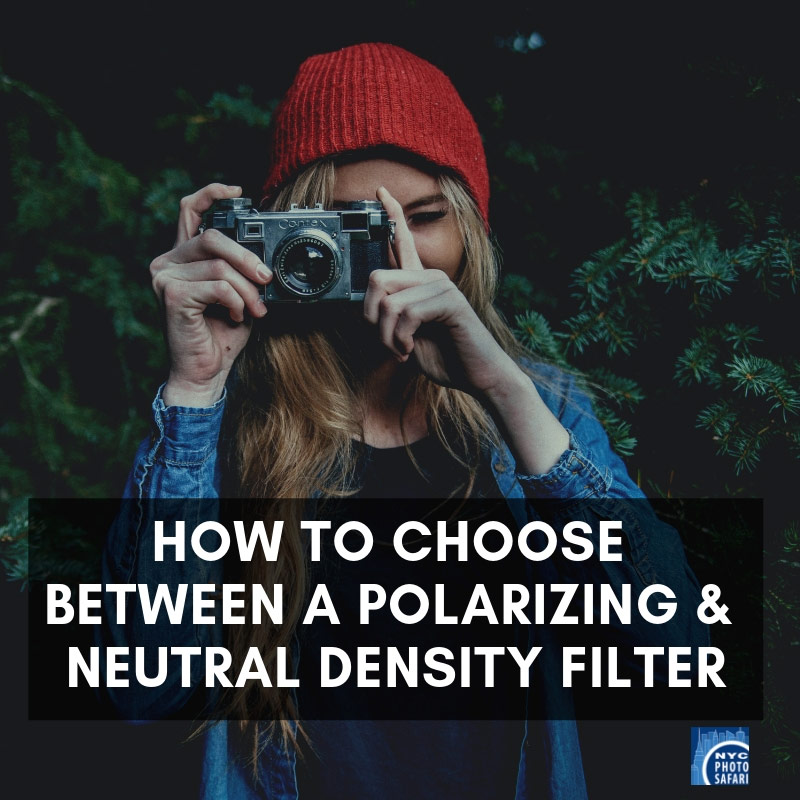
Many people are investing lots of money into polarizing and Neutral Density filters without understanding the differences.
A polarizing filter is a filter designed to polarize the light. In other words, they work the same way your sunglasses do. When glare enters the filter first the filter redirects the light at a 90 degree angle to reduce the glare. This works similarly to your sunglasses, a polarizing filter can also enhance some colors, like blue skies. As a result of this, polarizing filters are very popular.
However this benefit comes with a downside; polarizing filters reduce the amount of light coming into your camera by approximately 1.5 - 3 stops. This is problematic because in photography we constantly need to gather as much light as possible. Although it is not bad to use a polarizing filter for the purposes stated above, it is not advisable to let the filter live on your lens as it reduces the available light. Furthermore, many photographers invest a lot of money into expensive lenses so that they can gather more light (usually 1-1.5 stops of light), which means that a polarizing filter defeats the purpose of this expenditure.
The question then is what is the difference between a polarizing filter and a neutral density filter? As stated above a polarizing filter polarizes the light (reducing or eliminating glare) while a Neutral Density filter only reduces the amount of light. Neutral density filters are capable of reducing the amount of light coming into your camera by .5 to 15 stops of light. If photographers are always trying to gather more light, as stated above, then why would a photographer intentionally reduce the light? Imagine if you are taking photographs of a waterfall outside in the middle of the day in direct sunlight. Without a filter your slowest shutter speed would likely be 1/15 at F/22. If you wanted a milky looking waterfall you would need at least a 1-15 second exposure. By adding a 5 stop ND filter you would be able to do a 2 second exposure.
In conclusion, if you are attempting to reduce glare, use a Polarizing filter. If you are reducing light use a ND filter. You can use both together. However anytime you stack filters you are increasing problems with dust and also distortion.